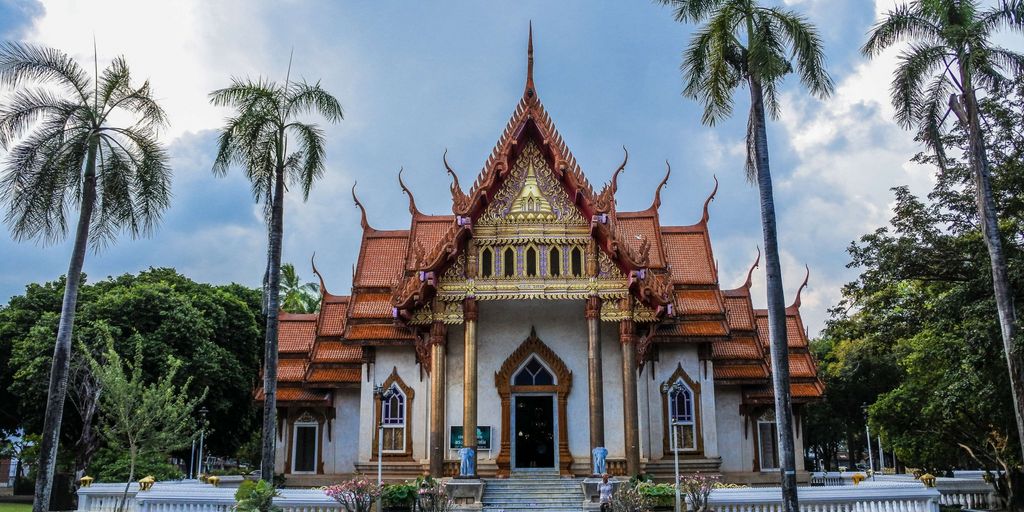
Nestled on the slopes of Geumjeongsan Mountain, Beomeosa Temple in Busan is a beacon of serenity and cultural heritage. As one of the most significant temples in South Korea, Beomeosa offers visitors a unique glimpse into the country’s rich Buddhist traditions and history. From its ancient origins to its modern-day practices, this temple is a must-visit for anyone looking to experience the spiritual and natural beauty of Busan.
Key Takeaways
- Beomeosa Temple is located on Geumjeongsan Mountain in Busan and is one of the most important temples in South Korea.
- The temple offers a rich history, with origins dating back to the 7th century, and has undergone various reconstructions and preservation efforts.
- Visitors can explore impressive halls, courtyards, and hidden gems within the temple grounds, each showcasing unique architectural marvels.
- A temple stay at Beomeosa provides an immersive experience into Korean Buddhist culture, including daily rituals, meditation sessions, and cultural workshops.
- The surrounding area offers excellent hiking opportunities on Geumjeongsan Mountain, and visitors can also enjoy local flavors at nearby restaurants.
A Glimpse into Beomeosa’s Rich History
Ancient Beginnings
Beomeosa Temple was originally established in 678 on the eastern side of Mount Geumjeongsan near present-day city of Busan. Mount Geumjeongsan means “the mountain with a golden well” – legend has it that a golden fish descended on colorful clouds from heavens and swam in the well at the top of the mountain giving it magical properties. Thus, the name of Beomeosa actually translates as the “Temple of the Heavenly Fish”.
Reconstruction and Preservation
Beomeosa Temple was largely destroyed during the wars with the Japanese in the late 16th century but was restored in 1613. The present site dates back to that time but some structures can be traced back as far back as the 9th century! Today, Beomeosa Temple is one of 25 major temples in Korea and has over 200 branch temples around the country.
Cultural Significance
Located at the edge of Mt. Geumjeongsan, Beomeosa Temple was constructed by monk Ui Sang in the year of 678. Renovated in 1713, the temple is one of the most delicate and luxurious architectures of the Joseon Dynasty (1392–1910). Features include Iljumun, the three-story pagoda with four pillars, built in the 9th century, and seven royal palace wings, pavilions, three gates, and eleven hermitages. Designated as a natural monument, beautiful wisteria woods and valleys surround the temple.
Exploring the Temple Grounds
Main Halls and Courtyards
The main temple has outside seating arranged for a very large audience. Walking through the complex, you’ll find altars for prayer and beautiful scenery surrounding the temple. You can practically have all of the temple to yourself after the tourists go home.
Hidden Gems
There are many tiers to this temple site with pagodas, statues, sanctuaries, and gateways. Walking up the mountain, you’ll see stela slabs sporadically in the bush along the walkway, interspersed by blossoming apricot trees. The feng shui and harmony of this temple interwoven in nature is in itself the essence and wonder of this spiritual venue.
Architectural Marvels
The temple has four entrance gates: the first uniquely held up by four stone pillars, the second containing four fierce temple guardians, the third representing the Buddhist concept of non-duality, and the final one holding up an entire building above it. This brings you into the temple’s main courtyard, from where you can further ascend a flight of stairs to Daeungjeon, the main temple hall, also known as the Dharma Hall.
Experiencing a Temple Stay

Staying at Beomeosa Temple is a unique way to dive deep into Korean Buddhist practices. You can choose between a single day, an overnight visit with a full program of activities, or a rest-oriented stay where you can relax and explore the temple grounds. You can practically have all of the temple to yourself after the tourists go home.
Daily Rituals
Participants get to join in rituals and engage freely with Buddhist monks. This gives you a real taste of what daily life is like in a Korean Buddhist temple. The monks gather for meditation, and you can join them to experience the serenity of the temple.
Meditation Sessions
Meditation is a big part of the temple stay. You will have the chance to meditate with the monks and learn about their practices. This is a great way to find inner peace and connect with yourself.
Cultural Workshops
The temple stay also includes cultural workshops where you can learn about Korean Buddhist traditions. These workshops might include activities like making a 108 beads bracelet or participating in 108 prostrations. It’s a fun and educational way to immerse yourself in the culture.
My stay was a lifechanging experience that I hope you’ll someday get to enjoy. The beautiful, historic setting of Beomeosa Temple offers a serenity unlike anything I’ve ever felt in my travels.
Hiking Geumjeongsan Mountain
Trail Highlights
Once you retrace your steps to the entrance to the whole complex, you should see signs pointing to the start of a short 1.6km hiking trail to the North Gate. If in doubt, head towards the toilets and keep going past to find more maps and the start of the hike. The path skirts around the edges of the Beomeosa complex and over huge rocks. It’s easy going and there are signs pointing the way throughout; you can’t really get lost.
Best Times to Hike
The best times to hike Geumjeongsan Mountain are during the spring and autumn months. The weather is mild, and the scenery is breathtaking with blooming flowers or colorful leaves. Avoid hiking during the summer as it can get very hot and humid.
What to Bring
- Comfortable hiking shoes
- Water and snacks
- A hat and sunscreen
- A map or a phone with GPS
Stock up on snacks and water before you explore the area. It’s also a good idea to bring extra to share with other hikers – this is normal and a great way to engage with the locals.
Local Flavors Near Beomeosa
Must-Try Dishes
When you’re near Beomeosa, you have to try some of the local dishes. Busan is famous for its seafood, so make sure to taste dishes like hoe (raw fish) and eomuk (fish cake). Another must-try is dwaeji gukbap, a hearty pork soup that’s perfect after a day of exploring.
Best Restaurants
There are several great places to eat near Beomeosa. Here are a few recommendations:
- Gukje Market: A bustling market where you can find a variety of street foods.
- Jagalchi Fish Market: The best place to get fresh seafood.
- Pojangmacha Street: For a more local experience, try the food stalls here.
Foodie Tips
- Try street food: It’s not only delicious but also gives you a taste of local culture.
- Visit markets: Places like Gukje Market offer a wide range of foods to try.
- Ask locals for recommendations: They often know the best spots that aren’t in guidebooks.
Exploring the local flavors near Beomeosa is a culinary adventure you won’t want to miss. From bustling markets to hidden food stalls, there’s something for every palate.
Tips for First-Time Visitors
Getting There
To get to Beomeosa Temple, you can take the subway to Beomeosa Station on Line 1. From there, it’s a short bus ride or a 20-minute walk to the temple. Make sure to check the bus schedule so you don’t miss the last bus back!
What to Wear
When visiting the temple, it’s important to dress modestly. Wear comfortable shoes as you’ll be doing a lot of walking. Also, bring a light jacket if you plan to stay until the evening as it can get chilly.
Etiquette and Customs
Be respectful of the temple grounds and the people there. Here are a few tips:
- Bow slightly when entering the temple buildings.
- Keep your voice low to maintain the peaceful atmosphere.
- Do not touch any religious artifacts.
Visiting Beomeosa Temple is a unique experience. Following these tips will help you make the most of your visit and show respect to this beautiful and historic site.
Conclusion
So, there you have it! Beomeosa Temple is not just a place of worship but a gateway to experiencing Korean Buddhist culture and the natural beauty of Busan. Whether you’re hiking up Geumjeongsan Mountain, staying overnight to soak in the serene atmosphere, or simply exploring the stunning architecture, Beomeosa offers something for everyone. Don’t forget to try the delicious pajeon at the nearby restaurants before you head back to the hustle and bustle of the city. Trust me, a visit to Beomeosa Temple is an unforgettable experience that will leave you with lasting memories and a deeper appreciation for South Korea’s rich cultural heritage.
Frequently Asked Questions
What is the history of Beomeosa Temple?
Beomeosa Temple was founded in 678 AD during the reign of King Munmu of the Silla Dynasty. It has undergone several reconstructions, particularly after being destroyed during the Japanese invasions of Korea in the late 16th century.
What can I expect during a temple stay at Beomeosa?
During a temple stay at Beomeosa, you can participate in daily rituals, meditation sessions, and cultural workshops that offer a deep dive into Korean Buddhist culture.
What are the main attractions within Beomeosa Temple?
The main attractions include the main halls and courtyards, hidden gems like ancient stone pagodas, and architectural marvels such as the Daeungjeon (Main Buddha Hall).
How do I get to Beomeosa Temple?
Beomeosa Temple is accessible via public transportation. You can take the Busan Metro Line 1 to Beomeosa Station and then a short bus or taxi ride to the temple entrance.
What should I wear when visiting Beomeosa Temple?
It is recommended to wear comfortable clothing and shoes suitable for walking. Modest attire is also advised out of respect for the temple’s religious significance.
What are some local dishes to try near Beomeosa?
Near Beomeosa, you can try local dishes such as pajeon (green onion pancake) and other traditional Korean foods at nearby restaurants.

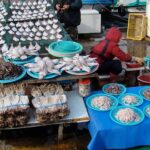
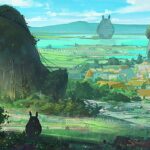
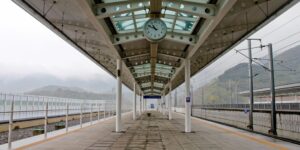

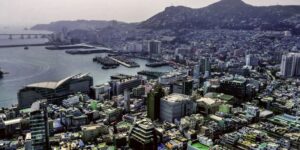
No comment yet, add your voice below!